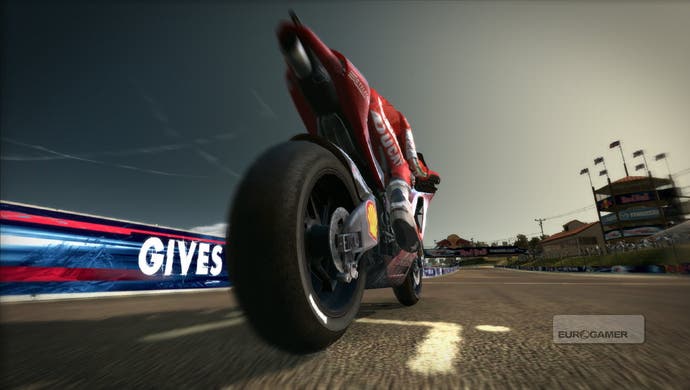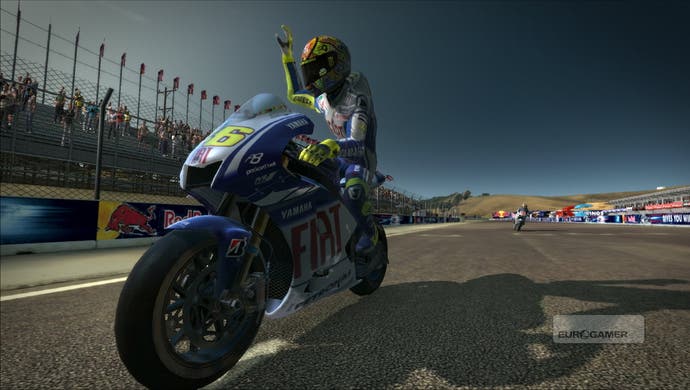MotoGP 09/10
The doctor is in.
This week I was given the privilege of blasting a brand new Yamaha R1 around the Stowe circuit at Silverstone. Although it was on a cold morning where I couldn't get any heat into the tyres, for those brief 20 minutes of amateur riding I was reminded of all the reasons I love biking.
It's that feeling of smugness as you filter through a quarter-mile queue of traffic. It's that rush of adrenaline as you shift up into second and gun the throttle. It's that split second of contemplation as you brake late, lean in and accelerate smoothly through a well rehearsed apex. The reasons are countless.
But in terms of replicating the riding experience onto a control pad, developers aiming for a simulation experience invariably run into problems. Although cars have a quantifiable number of human-controlled variables used for movement - i.e. steering, clutch, accelerator, brakes, etc. - motorcycles in comparison aren't nearly as easy to replicate through an analogue controller.
I should also stress this is far beyond the subtleties of front and rear braking. Any serious motorcyclist understands the significance of leaning and counter-steering, and how they work on an often subconscious level.
Perhaps this is why I've always taken games like Road Rash over the technically brilliant Tourist Trophy. While controlling throttle, brakes, gears, lean and weight distribution simultaneously may be what biking is about on the road, achieving the same level of aptitude on a pad feels unintuitive and, dare I say it, boring.

However, as a racing fan I was determined to get on board with MotoGP 08 with a view to bagging James Toseland an unfathomable first year win for Yamaha Tech 3. Unfortunately, I lost interest in a lacklustre game and the real James has now been relegated back to WSBK.
For MotoGP 09/10 it seems Capcom, along with new developer Monumental, has taken the basic template from MotoGP 08 and built an actual game around it. The most noticeable way in which it has achieved this is with the new super-imposed racing line that expands across each of the 17 GP circuits. The line pinpoints the optimum place to brake and accelerate through trickier corners, and if you start to place a better lap time by riding a line that's slightly faster, the on-screen line will adjust itself mid-race to better suit your riding style.
Hardcore racing types may see this nurturing mechanic as being cheap, and Monumental will almost certainly give racing purists the option to turn it off. But for those of us who don't know Le Mans and Assen like the back of our hand, the riding line helps to keep MotoGP fun without straying into arcade racing.

Because at its heart MotoGP 09/10 seems to be trying to stay more simulation orientated, while giving new players a shot at placing a healthy lap time that won't instantly be ridiculed. Even the control system has been reworked so as to be more intuitive.
The most significant change is the introduction of a new tuck-in control, which replaces the weight-shifting mechanic from the previous game. The new system is simple to understand and easy to implement, as at its basic "tucking in" makes the rider more aerodynamic, allowing for faster acceleration on the straights - while at the same time limiting how quick you can turn.
Its effectiveness is highlighted by the fact I'm only allowed to race in the 125cc division during this hands-on, with tucking-in maxing out the light bikes to around 140mph - about a 20mph increase - on the straight at Mugello.








